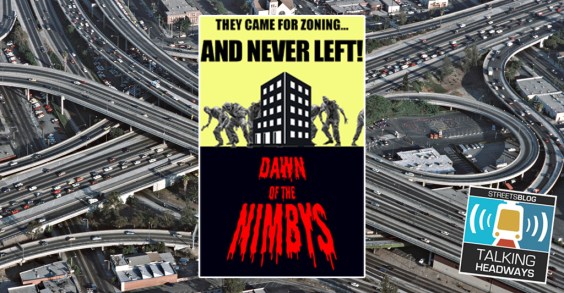 Flickr photo: Troy Holden.
Flickr photo: Troy Holden.Enforcement of laws on Muni has been a balancing act for the San Francisco Municipal Transportation Agency (SFMTA), as safety fears and controversy over work orders with the SFPD have led politicians and advocates to complain the police are charging for services they don't deliver. At the same time, saturation enforcement for proof of payment has led minority rights advocates to argue that uniformed police accompanying fare inspectors on sweeps have a chilling effect on riders who don't understand they are only being asked to show their transfer tickets, not their immigration papers.
Despite a host of data that shows targeted enforcement on lines with the most incidents of crime and fare evasion reduces both crime and fare evasion, the struggle to gain the public's trust can be more challenging than pointing out statistical trends.
In a presentation to the SFMTA's Board of Directors in July, SFPD Deputy Chief John Murphy, whose department is responsible for law enforcement on Muni vehicles and at its facilities, detailed the progress his department has made to meet the expectations of the memorandum of understanding (MOU) between the two agencies and account for the large bill police give the transit agency each year for services rendered.
Deputy Chief Murphy said the SFPD and SFMTA deployed resources based on a statistical analysis of crime, community complaints, and drivers' concerns. The SFPD required district station captains to develop and implement enforcement plans for their districts based on crime statistics and to submit a monthly enforcement calendar that detailed the steps they were taking to target enforcement to reduce crime on Muni accordingly. The results each month are then analyzed in Compstat meetings for effectiveness.
In addition to district station efforts, Murphy oversees the Muni Response Team, which consists of two sergeants, seven uniformed officers and four k-9 teams and operates primarily on the Muni Metro Rail System, as well as the Muni Task Force, which consists of one sergeant and seven plainclothes officers who target the most problematic coach, rail and trolley lines based on crime statistics.
According to numbers presented by Murphy, in the months after the Muni Task Force was deployed, crime on Muni dropped by nearly half. Couple that with the resolution of several high-profile cases on Muni, including the apprehension of a Muni mechanic and another man who were stealing late night transfers and selling them for profit, the results reflected well on the department.
Though he said the sudden drop could be an anomaly, Murphy hoped to show data in the near future that indicated it was a trend. Regardless, he believed these officers were "worth their weight in gold" and pointed out the gold paying their salaries was coming from a joint Federal Emergency Management Agency and California Office of Traffic Safety grant, so it wasn't impacting Muni's bottom line.
"A six-month time frame is insufficient to declare victory on crime on
Muni, but the downward trend is clearly identifiable and promising," SFMTA CEO Nat Ford told Streetsblog recently. "The numbers speak for themselves. Anytime you can cut crime as significantly as indicated, you are doing something right."
"In
addition," Ford said, "we are addressing the public perception of safety by
strategically deploying uniformed officers at key locations and times of
high incident numbers."
Rights Groups Still Concerned With Saturation Enforcement
 A new poster by the SFMTA about fare evasion.
A new poster by the SFMTA about fare evasion.Despite these positive results, the news that the SFMTA has resumed saturation enforcement for proof-of-payment has been largely met with skepticism and alarm by groups representing low-income San Franciscans and people of color. Despite data showing the system-wide fare evasion rate fell from 9.5 percent from April through
July 2009, to 2.6 percent from July 2009 through March 2010 when the saturation operations were in effect, advocates enlisted the help of the Human Rights Commission to halt them until the SFMTA underwent sensitivity training and used multi-lingual fare inspectors.
The SFMTA will also use fewer fare inspectors and police officers under the new program, according to Ford. "What they're going to do is really look at what is the necessary number of fare inspectors and officers to accomplish what we're doing, versus the kind of, two dozen officers and fare inspectors swooping down on a line."
Even though the Human Rights Commission is on board with the SFMTA for the scaled-back operations, Beatriz Herrera, an organizer with People Organized to Win Employment Rights (POWER), said she was concerned with the process and her organization was working with a broader coalition to monitor the impacts to low-income riders and minorities.
"We think proof of payment in general is targeting low-income people of
color," said Beatriz Herrera. "Our problem has been the way that they started enforcement. It went from
zero payment enforcement to hyper-vigilant enforcement with cops
stopping people, people who didn't understand, not knowing what was
happening. It's the way that it was being enforced that was so
offensive."
Deland Chan, a planner with the Chinatown Community Development Center expressed solidarity with POWER and the Chinese Progressive Association (the organization's Emily Lee was quoted last week in The Examiner, expressing misgivings about the program). "We hope the re-trained fare inspectors/police officers will demonstrate cultural and linguistic sensitivity," Chan wrote in an email. "I think we’re waiting to see what it looks like as it further unfolds."
Herrera contended the saturation efforts had the effect of "criminalizing people for taking public transit," and she said several people were facing deportation from fare inspections involving SFPD officers. She also said at the same time the city was cutting buses to get children to school, they were making it "a criminal offense if a youth is caught without a transfer."
Paul Rose, the SFMTA spokesperson, defended the procedure. "We are not targeting any group or any part of the city. Muni fare inspection is in place to
promote fare compliance and for no other reason.The bottom line is we'd
much rather have our customers pay the $2 fare rather than issue
citations," he said.
Rose argued Herrera's claim about deportation was false. "No one has been deported because they have not paid a $2 fare. Any reports of such an instance are unfounded," he said.
He also said the tickets for minors who don't have proof of payment are not criminal, but merely violations like parking tickets.
Supervisor David Campos suggested riders would be able to judge the SFMTA based on the comportment of the fare inspectors, which he said the Board of Supervisors would be watching closely.
"My
hope is that they have heard the community and they are going to
approach it in a way that is sensitive to those concerns. I appreciate
the fact that they sat down with the community," said Campos. "I think the main thing about that, it depends on how it's implemented."





